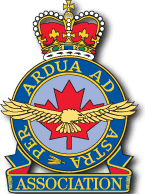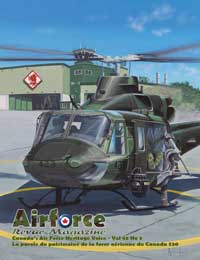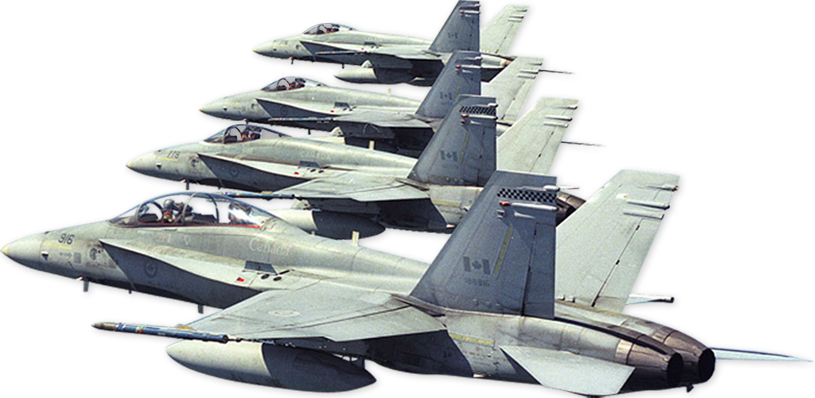In the opening weeks of the First World War an aircraft pilot flying over the lines could expect a volley of rifle fire from either friend or foe on the ground. In an attempt to secure safe passage for pilots flying over friendly lines, at least, the Union Jack in the form of a shield was painted on the underside of British aircraft. Even though authorities advocated a much more blown-up Union Jack later, the plan was dropped because at a distance the St. George’s cross in the Union Jack was difficult to distinguish from the German Cross. The Royal Flying Corps then turned to their French allies for inspiration. The French had adopted a roundel based on the tricolor. The RFC and the RNAS took this roundel and re-versed the colours, blue outermost with the centre red. This same roundel has been carried on British aircraft to this date.
On 30 November 1921, the Canadian Air Force was presented with the Blue Ensign of the Royal Air Force to fly as their own. Lord Trenchard himself arranged the privilege. The other commonwealth countries also adopted this ensign. The RCAF retained this privilege at its formation on 1 April 1924. This lasted until 5 July 1940 when the RCAF was authorized to introduce the maple leaf into the roundel in place of the red centre. At this time the roundel on the ensign was so revised.
Aircraft flown by RCAF personnel, however, continued to wear the RAF roundel since their aircraft including those built in Canada all came through RAF channels. On 19 January 1946 the suggestion of A/V/M George V. Walsh was accepted officially and RCAF aircraft began to wear their own markings. This roundel is still worn today by aircraft of the RCAF, RCN Fleet Air Arm and Canadian Army. The roundel is a blue ring, surrounding a white area in the centre of which is the red maple leaf.







